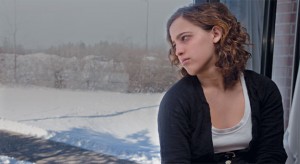When she was considering applying to Ithaca College and Cornell University, senior Madison Ryckman received a blunt warning regarding weather from her high school guidance counselor.
“She said, ‘People from Colorado do not do well in upstate New York,’” Ryckman said. “I thought, ‘That’s ridiculous.’”

Hailing from Denver, Colo., Ryckman said she was not prepared for the seemingly eternal gray winters of Ithaca.
“Pretty much every person I’ve met from Colorado or any kind of sunny place — almost all of them feel the difference and suffer from the lack of sunlight,” Ryckman said. “It’s a really cloudy place with really bad weather. It’s just gray every single day.”
According to the Mayo Clinic, seasonal affective disorder is triggered when a person is exposed to less sunlight than usual. When the brain receives less light, it produces melatonin, which helps regulate sleep. However, too much melatonin can lead to drowsiness and fatigue.
According to Mental Health America, a nonprofit organization, the main age of onset is between 18 and 30, making students at the college who are used to long periods of sunlight especially susceptible to SAD. The American Academy of Family Physicians classifies SAD as a type of depression.
Dr. Norman Rosenthal, medical director and CEO of Capital Clinical Research, said he was the first to describe seasonal affective disorder. Rosenthal advocates the use of light therapy to treat symptoms of SAD and said the Cochrane Collaboration, a network of healthcare providers, patients and advocates, also confirms its success.
“I would say the majority of clinicians would say that it’s effective,” Rosenthal said.
LeBron Rankins, staff psychologist in counseling and psychological services, said it is often difficult to diagnose SAD because patients must display depressive symptoms for at least two years consistently during the same season.
Rankins said those who have seasonal depression often suffer not from lack of willpower but from lack of energy.
“The will and desire is often there, but people can’t seem to get themselves going,” Rankins said. “I think of seasonal affective disorder as what a bear would have if it wasn’t allowed to hibernate.”
To treat SAD, the Hammond Health Center provides a lightbox, a lamp that emits UV rays and can reverse the production of melatonin in the brain.
Ryckman, though not clinically diagnosed with SAD, said she started using her own artificial sunlight lamp in Fall 2009 to help treat the fatigue she felt in the winter. She said she uses it in the morning while reading the news or eating breakfast.
“I really love my lamp,” Ryckman said. “It’s very retro, like a 1950s salon, and it really does positively impact my day. It’s not like I don’t have bad days when I use the lamp or that I have good days necessarily when I do, I just generally feel sunnier.”
Sophomore Sarah Matte said she also has her own artificial light, which she uses for 15 minutes in the morning to recreate feelings of being in the sun.
“You can feel that lifting feeling around your collarbone,” Matte said. “That helps you throughout the day. I’m much less tired when I use it.”
Sophomore Lyndsey Lyman said she began experiencing symptoms of SAD in middle school and began to see a therapist who suggested she might have SAD.
Lyman said she takes St. John’s wort, a plant used to treat depression, and sometimes vitamin D supplements to treat depressive symptoms she experiences each winter.
“Usually I’m a more easy-going person, but then sometimes during these months, if someone says something, it can be particularly offensive or upsetting personally. It’s not a matter of ‘That was rude’ or ‘That was mean of you to say,’ it’s a matter of ‘That’s going to affect me for a day or two now,” she said.
Rosenthal said students should expose themselves to as much light as possible, both natural and artificial, to relieve symptoms.
“[Students should] consider bringing more light into [the] dorm room, either in the form of a light fixture or in the form of a dawn simulator that turns the light on gradually in the morning,” Rosenthal said.
Sophomore Erin Irby, co-president of Active Minds, said SAD can come on suddenly and alarm students. Irby said events such as the De-Stress Fest, sponsored by the organization last December, encourage students to be aware of their mental health.
“We work with the counseling center to make sure people know that it is a resource that is on campus. We also have a series of events throughout the semester to remind people that mental health is a priority,” Irby said.
Lyman said it’s common for those suffering from symptoms of depression in the winter to not realize they are showing symptoms of SAD.
“I don’t think people really get diagnosed clinically,” Lyman said. “One of the issues is that people don’t necessarily know what they’re experiencing and that it has a name. Some of my friends do have it, and we talk about how we want spring to come, but I don’t really think people know the specifics of it.”








